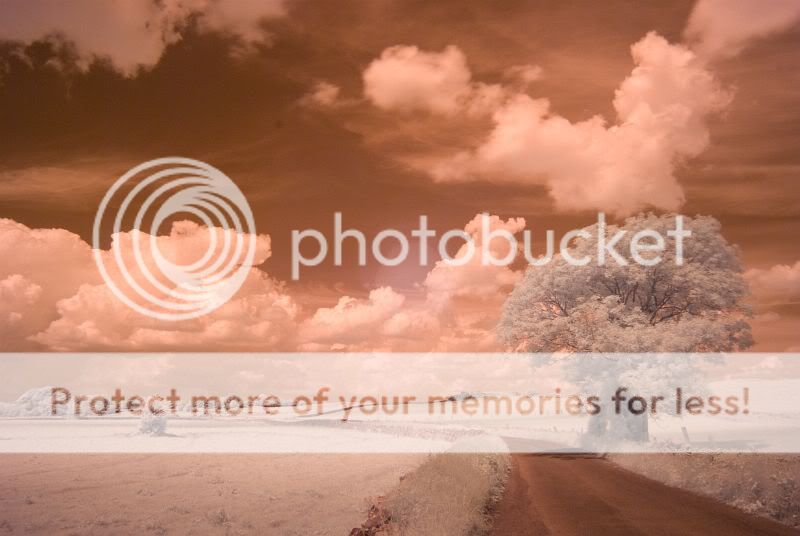Homepage › Forums › Photo Critique › Landscape › Field of Dreams
- This topic is empty.
Field of Dreams
-
Alan Rossiter
ParticipantAnother IR – this time I was capturing the unusual cloud formations. I also captured this one where my sisters house was central to the eminating clouds and she said it looked like Amityville :shock: . Not the desired reaction I must say.
There’s no compositional merit in this one just the clouds with a little field.
Alan
Martin
ParticipantYour making IR look easy, stop posting :evil:
Nice simple and different. The R72 is working out very well for you, some great shots your posting.
M
Alan Rossiter
ParticipantThanks Martin.
To be honest – it is easy once you understand what you need to do with your camera re WB, what you need to do in post processing and what pitfalls to watch out for. My biggest issue at the moment is hotspots which are hit and miss but I reckon the shorter the shutter speed the less defined it becomes. I’m also looking at photographing a grey card at various apertures and shutter speeds to replicate the hot spot then invert the image and overlay it to a similar setting shot.
I think I’ll look for a different filter too though – the one I have is 55mm for the Sony kit lens which is setting a new level on the adjective “poor”…it’s rubbish. Maybe a 77mm to fit the f2.8 will work out a little better.
Thanks,
Alan.
Rob
MemberVery good Alan. A bizarre look about this one; those clouds look
as though they’re zooming towards you at a rate. I think I’ll have to
get me one of those R72 filters and give this lark a go myself – so much
better than the faux IR stuff I’ve come up with…Rob.
Martin
ParticipantHotspots can be a pain. As i said before there not much of an issue with my Nikon Lenses so cant be of much help to you. The Sigmas and Tokinas etc can be a problem but a quick rub with the burn tool and they are sorted. Any chance of seeing a hotspot to get an idea as to how bad yours are?
Do you have any prime lenses? Prime lenses are usually very good for not giving hot spots. Also play around with apertures, if a lens is going to have hotspots they will be up around F22, the more you open up the lens (nearer to F4) the less of a chance of having them
For Nikon lenses and mounts there is good info on the below site on IR performance for lenses, he mentions things around what lenses are good/bad for hotspots. Not of much use to you Alan but might be for someone else who might be searching this thread in the future
Zooms
http://www.naturfotograf.com/lens_zoom_01.html
Primes
http://www.naturfotograf.com/lens_wide.htmlM
Alan Rossiter
ParticipantRob – you should give it a go. I got my filter for €19 incl postage from the US. I only wanted to try it out and not go to any great expence doing it but it can be fun.
Martin – I’ll post one this evening with a hot spot. If you want to keep a colour IR it’s more difficult as it’s more about hue than brightness so you have to fiddle and I’ve never completely gotten rid of it. B&W, as you pointed out before, does allow for a fix when burning the midtones. But like I said I had 1 image at 1/30sec with no hotspot and 1 at 30secs with a clearly defined hexagon. The balance between long shutter speeds with a small aperture to cure the focus problem against no hotspot is a fine one.
Alan
wayneleone
MemberSorry folks, dumb question here but are you talking about a filter that goes over the camera sensor or over the lens?
Alan Rossiter
ParticipantNothing dumb Wayne – it goes over the lens. The camera conversion is rather more expensive and is a permanent alteration. The filter is less so on both counts. Martin has a permanent convertion done as do others on here.
Alan.
wayneleone
Membergavin
ParticipantGreat shot….so this is infra red on a digital camera. Are you saying all you need is a certain filter to achieve the basic effect before processing.
Alan Rossiter
ParticipantGavin – yup, it’s as simple as that. Set up a custom WB, adjust your camera settings to get the right exposure, block off your viewfinder and away you go.
This is an example of a hotspot, or brightspot like I explained earlier. This is a direct transfer from raw, unmodified.
Dead centre you can see the hex mark. This was an 8sec exposure at 90degrees to the sun. This may have a part to play. Shooting towards the sun seems to help too.gregor
ParticipantI might consider getting one of those filters, what sort of processing is required?
Great jobAlan Rossiter
ParticipantHere’s a workflow and an action for PS. I use this, or similar. You will need to tweak your settings per image but effectively the main one is the swap of the red and blue channel (see on the workflow) and auto levels. With this you’re 90% there.
http://www.outdooreyes.com/photo94.php3
Alan
gregor
Participant
You must be logged in to reply to this topic.



